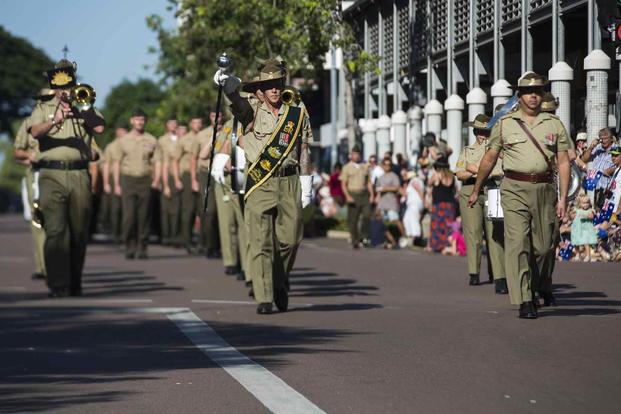The U.S. military will step up the number of air, land and sea units that rotate through Australia as allies in the region bolster security in reaction to an increasingly assertive China, Defense Secretary Lloyd Austin said Tuesday.
The agreement was finalized during a joint U.S.-Australia meeting that included Austin and his defense minister counterpart from Canberra. Details of the increased rotations were not immediately provided, but Austin said they would be released soon.
The first military rotation to the country occurred in 2012 when 200 Marines arrived in Darwin, a city in the north of Australia that sits on the Timor Sea about 2,000 miles from mainland China. That troop presence now includes thousands who train with Australian defense forces. Defense cooperation has deepened over the past decade, with the U.S. and U.K. announcing last year they would help Australia build nuclear-powered submarines.
Read Next: The Army Keeps Booting COVID Vaccine Refusers as Shot Requirement May Be Dropped
"Based upon today's talks, we will increase the rotational presence of U.S. forces in Australia," Austin said at a press conference at the State Department. "That includes rotations of bomber task forces, fighters and future rotations of U.S. Navy and U.S. Army capabilities."
In 2019, 2,500 Marines rotated through Darwin, though the numbers dipped during the COVID-19 pandemic, according to the Australian government.
The two countries also agreed during the talks to deepen ties between their defense industrial bases and invite Japan to participate in the activities of the U.S. rotational forces. The meeting included Secretary of State Antony Blinken, Australian Minister of Foreign Affairs Penny Wong, and Australian Defense Minister Richard Marles.
Marles said there will be increased activity between the U.S. and Australian forces across all military domains following the talks.
"We're also looking at increased force posture cooperation in enhancing the capacity of facilities in Australia," meaning improvements to bases and properties used by U.S. forces during the rotations, he said.
The longtime alliance with Australia has been intensified by China's global rise and increasing territorial claims and military presence in the far western Pacific, challenging the U.S. military and its allies.
An annual Pentagon report released last month found that China has become more belligerent over the past two years, including live-fire missile drills when House Speaker Nancy Pelosi visited Taiwan in August. The report also found that Beijing could increase its nuclear arsenal more than threefold to 1,500 warheads by the middle of the next decade.
"The United States and Australia share a vision of a region where countries can determine their own futures, and they should be able to seek security and prosperity free from coercion and intimidation," Austin said. "Unfortunately, that vision is being challenged. China's dangerous and coercive actions throughout the Indo-Pacific, including around Taiwan, toward the Pacific island countries, and in the East and South China Seas, threaten regional peace and stability."
The increased military presence in Australia comes after the U.S. and U.K. announced in September 2021 that they had agreed to school the Australians on the "extremely sensitive" technology of nuclear-powered submarines. The U.S. had previously shared the technology only with the British.
The agreement, called AUKUS as an acronym for the three countries, will provide Canberra a fleet of subs with greater stealth, speed, survivability and endurance -- and an advantage in the region against China.
"We're committed to deliver on that promise at the earliest possible time," Blinken said during the press conference.
Marles said the nuclear sub technology was poised to transform Australia's strategic posture. "It will increase our capability dramatically," he said.
-- Travis Tritten can be reached at travis.tritten@military.com. Follow him on Twitter @Travis_Tritten.
Related: US Will Help Australia Build Nuclear Submarines as China Looms












